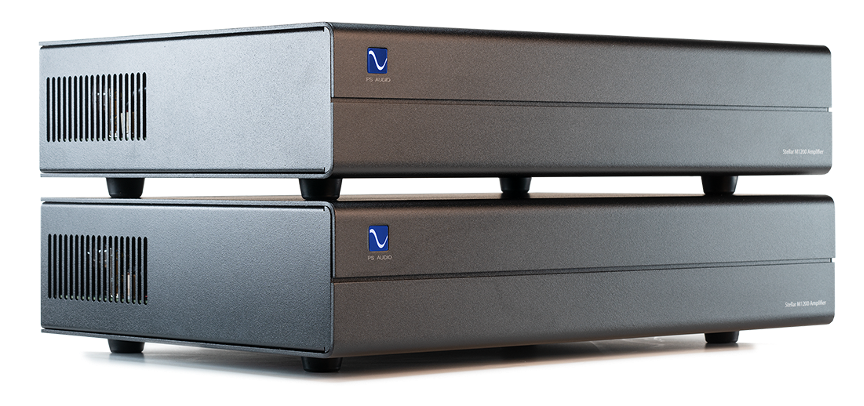
As I was growing up in the 1960s, I remember that my older brother, who was eight years my senior, was obsessively consumed with drag racing. Yep, think of the movie Grease except with early 60s Corvettes. What does this have to do with the PS Audio Stellar M1200 Monoblock Amplifier? Hang on, and I’ll get there.
Once I was about 10 years old, I was allowed to tag along now and then. He also “allowed” me to wax and help polish the cars. This is where I learned about Simichrome Polish and aluminum/mag spoke wheels. Lord my fingers would hurt at the end of a day of working on those intricate wheels and bolts. However, to this day, I still use Simichrome for any of my metal polishing needs. Hah!
As the cars got faster and the engines got bigger, there was a saying at the drag strip. Some even called it a rule. It was, “There is no substitute for cubic inches (i.e., power).” Why do I bring this up in the opening of my review of the PS Audio Stellar M1200 monoblocks? It’s because I am here to tell you if there is one thing these amps will teach you is that there is no substitute for WATTAGE (i.e., power). I’ll cover this more later in the review.
The Stellar M1200 Monoblocks
Let’s start with what these amps are. The Stellar M1200 Monoblocks from PS Audio are the latest offering in the Stellar Line. Darren Myers, the same designer who crafted the excellent PS Audio Stellar Phono I reviewed earlier this year, also designed these.
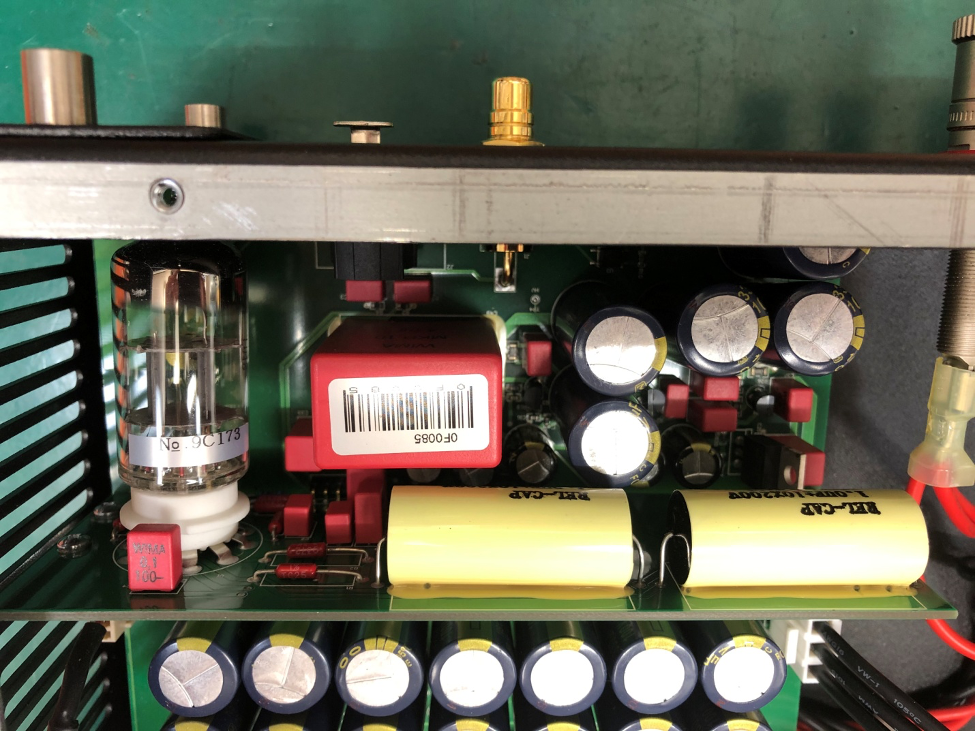
The Stellar M1200 monoblock amps are rated at 1200 watts into 4ohms and 600 watts into 8ohms. They use the latest ICE Edge Class D module for amplification. This is the first PS Audio product to use this latest ICE Edge module. The other Stellar Class D amps in the line use an earlier version of the ICE module. Darren told me this latest ICE Edge design has lower distortion, flatter output impedance vs. frequency, and flatter phase vs. frequency as compared to the older version.
The design twist on this amp is that Darren bypassed the ICE Edge input circuitry and fed his tube-based front end directly into the ICE Edge module. It is a Class A Zero feedback design that uses a 12AU7 tube.
Where I’m Coming from on Class D
Let’s face it, Class D amplifiers are not on the radar of the majority of the critical audiophiles. Like many of you, I am not a big fan of what I have heard so far in Class D amps. Over the years I have had numerous Class D designs pass through my audio room. They offered some very enjoyable musical experiences, but I always eventually yearned for something with a bit more density, a deeper color palette, and a more relaxed top end.
There is no question that new designs are sounding better and better, and designers are learning how to work with the Class D issues of rising HF distortion and filtering Pulse Width Modulation (PWM) that Class D employs. I have even seen a few Class D amps landing on the recommended lists of the big audio magazines.
Darren’s success with the Stellar Phono piqued my interest, and I contacted PS Audio for some review samples. About four weeks later, the monoblocks showed up at my door.
First Impressions of the M1200 Monoblocks
As you can see from the photo at the top of this post, the M1200 monoblocks are quite spartan in appearance and continue the understated look of the Stellar Series, which I like. The front panel sports a lone blue standby power button on the left side with the PS Audio Logo on it.
On one side of the rear panel, you will find the IEC AC inlet with the main power switch above it. On the other side grouped with the RCA and balanced input connectors are 12 volt in/out trigger connectors and an access panel that enables you to change the 12AU7 tube when the time comes or to “tube roll.” There are four speaker terminals in the middle in case you are bi-wiring. There is also a chassis grounding lug.
An Inside Look at the M1200 Monoblocks
When I removed the cover, I found the two main boards, the ICE EDGE amplifier module and the tube-based front end designed by PS Audio. One thing that caught my eye was the wiring for the speaker outputs. The speaker output wires come off of the ICE module with a pair of double wired cables that go to one set of terminals. Then, a single set of wires jump to the second set of speaker terminals.
Now, if you are as Type A as I am, this will stick in your head and perhaps give you a major headache. Fortunately, you can identify the speaker terminal wiring through the top cover vent slots, so there is no need to remove the cover. For my single wire hookup, I always used the double wired terminals. No, I didn’t compare the sound of both sets of terminals, but doing so did occur to my Type A cursed mind.
The Hookup
Ok, let’s listen to these babies. For that, I moved the M1200s into position and ran a balanced pair of cables (Audience Front Row and Triode Wire Labs Spirit II) from my Vinnie Rossi L2i-SE to the M1200s. PS Audio is quite adamant that balanced is the preferred connection, so I used those inputs.
I auditioned the amps powering my Acoustic Zen Crescendo II speakers and the Pure Audio Project Treo Classic 15 speakers that I currently have in my house for an upcoming review. I used Acoustic Zen Hologram II, Triode Wire Labs, Exemplar Audio, and Luminous Audio speaker wires.
Once the gear was all hooked up, I pressed the power button. The blue light from behind it pulsed on and off for about 20 seconds during the tube warm up cycle, and then it went to solid blue indicating that the amps were ready to play.
A Tale of Two Sounds
I was seriously distressed for the first few hours that I listened to the amps. The sound was flat and etched with a top-end that sounded like, well Class D. The sound was not inviting. In fact, I contacted Darren to see if I was possibly doing something wrong.
I got a quick answer. The amps need to have a minimum of 100 hours run-in on them before critically listening. He advised me that this could not be achieved by just turning the units on and leaving them on for 100 hours. They need to be fed a signal. Well thanks, Darren, my wife is going to love that! Fortunately, he told me that I could simply run a signal through them without attaching the speakers. Problem solved!
So, I fired up the CD player in my adjoining shop and fed the M1200s a continuous dose of music for the next 5 days. On day 6, I reinserted them in the system, and an entirely different sound emerged.
What or Who “Breaks-in”?
Before I describe their sound, this “break-in” process revealed something to me that I want to share with you. Over the years I have, of course, broken in equipment and noticed the difference in the before and after sound. Until now, however, I labored through the burn-in process in real-time day after day on my main system. Sometimes I noticed incremental changes, and sometimes I noticed major changes. In the back of my Type A brain, I wondered what or who was breaking in. Was it the component that was being “conditioned” or was I being “conditioned’ to the new sound?
With the PS Audio M1200 burn-in experience, I heard the monoblocks straight out of the box and then moved them to another room where they did not even play speakers. Then, I put them back into the system, and the sound had changed. In this case, since I was not in the conditioning process, the equipment itself actually “breaks in.”
The M1200 Sound
Remember my opening comments about cubic inches and wattage (i.e. power)? Well, the first and foremost thing I noticed about these amps is that they have TREMENDOUS control of the speaker. I immediately felt like each instrument had its own amplifier. Note, I am not saying each driver, I said each instrument. The bass quality tightens, and I felt like I had changed the “Q” of the woofer for better control and definition.
With the M1200s, several issues you thought were inherent in your speaker or room may change for the better. The soundstage is very wide and each instrument occupies its space with exceptional micro and macro dynamics. The sound is also very linear with no particular area highlighted or recessed. The overall clarity of the sound and its impact is striking. You will probably realize that your system was starved for wattage. It is something you just have to experience.
Now, this has nothing to do with overall volume. The first thing you think of with high wattage is high volume. No, this is about control and dynamic contrast, even at a medium listening level. Each instrument seems unaffected by the others. The first time you hear a system with very little dynamic constriction is a memorable event.
Honest Tone
Another surprise was that listening to this component, I would not suspect that it has a tube in the circuit but this tube is apparently doing its job. Remember when I said I had moved on from previous Class D amps because I longed for more tonal density. What I hear in the M1200s is an honest tone, not tube-like but not the earlier Class D “thinness” that I have heard. It has more meat on the bone than my previous Class D experiences. Now we are getting somewhere!
This is not my first foray into high wattage amplification. I have had McIntosh MC 500 monoblocks, the Halcro DM 68s, and the Levinson No.53s. If I were pushed, I would have to say that the M1200s sound most like the Halcros with a dash of tube magic.
Room for Improvement
Is everything roses with the M1200s? In most areas, I can say yes. I would like to see a slightly more relaxed presentation of the upper midrange in complex passages. Now and then on some recordings, the upper mids seemed “pushed” forward just a bit and lost a little bit of feeling relaxed and individual.
I would also prefer a bit more depth and height in the soundstage. These are quite minor issues, and they are not consistent, but I’ve noted them none the less. Beyond that, this is a very complete amp that will drive virtually anything and at the asking price, it is quite a sonic value.
Let’s Listen
Well since the proof is in the sound, I’ll share with you what I heard when listening to a few of my favorite tunes.
Jon Cleary and New Orleans Funk
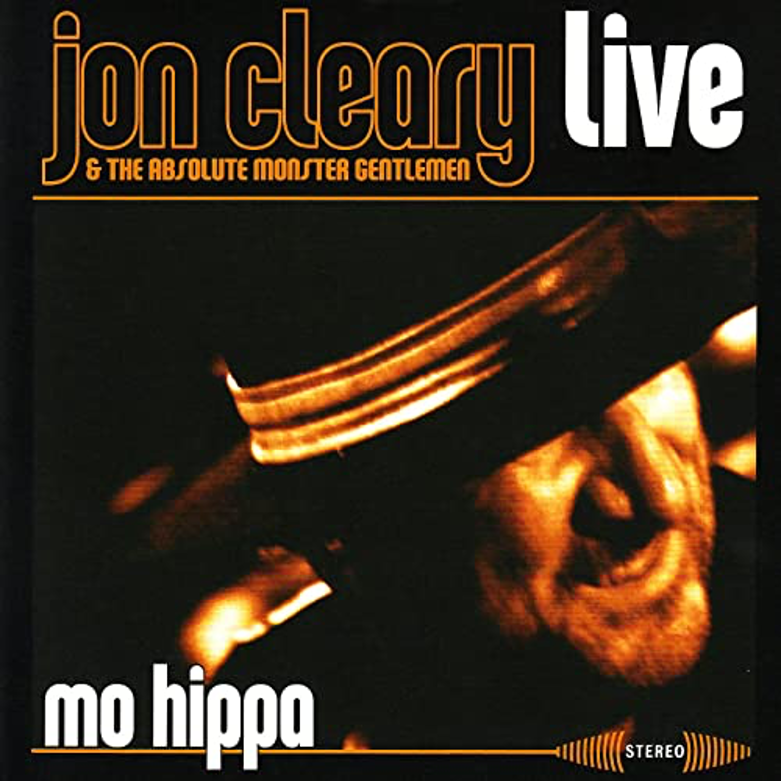
I have heard New Orleans’ own Jon Cleary live several times and love his Mo Hippa recording that captures him and the New Orleans funk sound. You may even hear where Bruno Mars picked up a few pointers.
Here is a link to a great video of Cleary performing the Booker T inspired Mo Hippa cut with some pretty darn good sound. Big D Perkins kills it on the guitar, and it really kicks in at about 2:30 into the video. If your foot isn’t tapping after a few minutes of this video, you need to see a cardiologist!
I have never heard the bassline in this song sound better than with the M1200s in my system. The attack and control of the bass line and drum set were exceptionally tight, quick, and lifelike with no overhang. All of the time, John’s vocals rode atop the music with clarity and focus. Yep, there is no substitute for wattage with clarity and speed. All that along with the unbridled dynamics literally “put me there.”
John Rutter Requiem

Next up is an old audiophile favorite, John Rutter’s Requiem with the Turtle Creek Choir on Reference Recording. I played, “Lord, Make me an Instrument of Thy Peace.” Although I have heard this cut hundreds of times over the years, the dynamics of the harp plucking and the overall tone of the harp at the beginning of this familiar number caught my attention immediately. I am not accustomed to hearing the harp stand out so much on this cut. It had more presence and was richer in tone.
When the choir came in, they conveyed the proper perspective in relation to the size of the venue. There was excellent width and depth and the individual voices were more easily distinguished than I am used to hearing. It was beautiful to listen to. Apparently, this wattage beast can be delicate when it needs to be.
John Wojciechowski Quartet
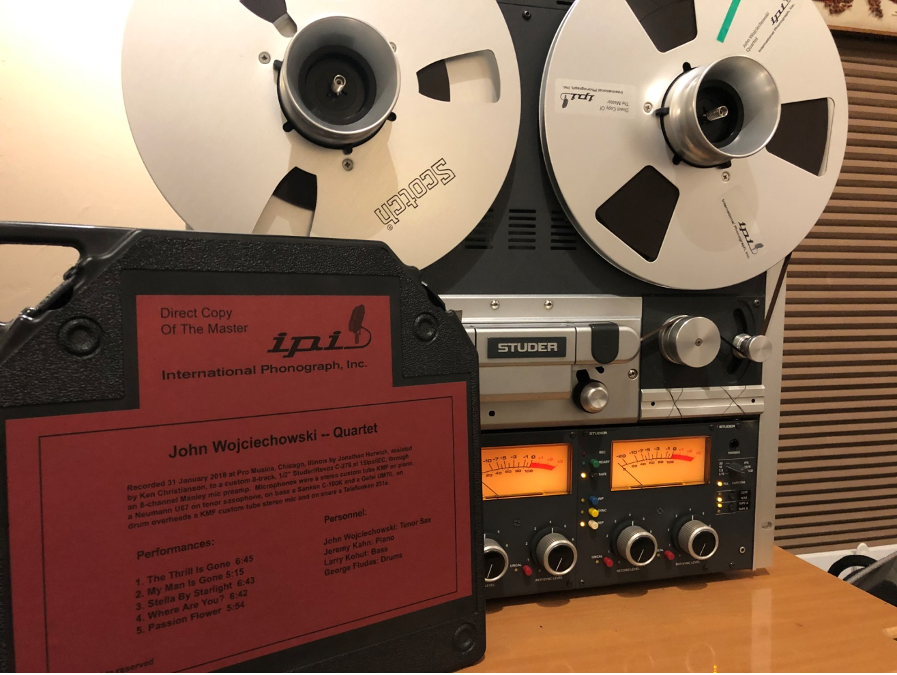
Lastly, I fired up my Studer A 810 and King/Cello tape preamp and put on the John Wojciechowski Quartet that consists of tenor sax, drums, piano, and acoustic bass.
This is a one-off master tape transfer of a live recording made by Jonathan Horwich of International Phonograph Inc. who offers some of the best open reel recordings on the planet at very reasonable prices. If you are an open-reel owner you need to know about him and support him. Here is the link to his site.
I have heard this combination of instruments many times at the LSU school music venue. We are fortunate to have a world-class jazz ensemble that is on the faculty and offers small concerts regularly. Sitting at their unamplified performances gives me a great reference for what music should sound like. Dynamics are subtle and yet again they are huge, as anyone who has been in the room with a live drum set being played will tell you.
I pushed the PLAY button on the Studer open reel and the Quartet came to life in my room. The virtually unrestricted macro and microdynamics of the M1200 allowed the recording to “breathe” as you hear at a concert. I could appreciate the subtle touches of the drum kit and piano like never before and the saxophone was in the room. And as for the acoustic bass, well that was an experience. Needless to say, I listened to the entire performance and in the end, felt honored to be able to do so in my listening room.
Conclusion
By now you can tell that I am quite taken with the Stellar M1200s. They did things in my system that I have not experienced with any other amp I have had before. I don’t know of an amp I have had more fun with or one that has put a smile on my face as many times as the Stellar M1200s did. When I take off my audiophile reviewer hat and sit down and crank up the music, they succeed in providing hours of pleasure. I normally keep 2 or 3 amps around to rotate in my systems, and you can be sure the M1200s will continue to be there.
While I can’t say everyone should run out and buy the M1200s, I will say that everyone should hear them. While there are no perfect amps, this could be your perfect amp. PS Audio’s generous trial program makes it possible for you to determine that. You will be a better listener for the experience, and I suspect many of you will not return them.
Stellar M1200 Mono Amplifier Specs
Unit Weight 27 lbs [12.2 kg] (each)
Unit Dimensions 17”W x 3.75”H x 12”D (13″D w/connectors)
17” W x 7.5” H x 12” D (Stacked)
Shipping Weight 29 lbs [13.15 kg] (each)
Shipping Dimensions22”W x 8”H x 17”D (each)
Silver Vacuum tube type12AU7
Voltage Options
(Factory set only) Japan 100V
North America 120V
Europe/Asia/Australia/New Zealand 230VMains Power Inputs IEC C14
Idle Power Consumption27W
Power Factor>0.9 @ rated power 4Ω
Audio Inputs
RCA (Unbalanced)
XLR (Balanced)
Speaker Outputs
Copper base nickel plated binding posts (2 pair)
DC Trigger Input3.5mm 5-15VDC
Warranty 3 years parts and labor
Signal
Gain30.5dB +/-0.5dBSensitivity for rated output power2.08V
Signal to Noise1kHz@1200 Watts > 112dB
Input impedance
Unbalanced 50KΩ
Balanced 100KΩ
Output Impedance50Hz, 2.8VRMS <0.007Ω
Damping factor50Hz. 2.8VRMS
8Ω >1100
4Ω >550
Frequency Response 2.8VRMS into 4Ω
10Hz – 20KHz +/- 0.5dB
10Hz – 45KHz +0.1/-3.0dB
THD&IM
1KHz, 1W/4Ω< 0.005%10-20KHz, 1W/4Ω< 0.01%1KHz, 150W/4Ω< 0.02%
Output Power
120vac mains, 1kHz, 1% THD
8Ω 600W Minimum
4Ω 1200W minimum
2Ω Stable for musical transients
Price $5998.00 pair


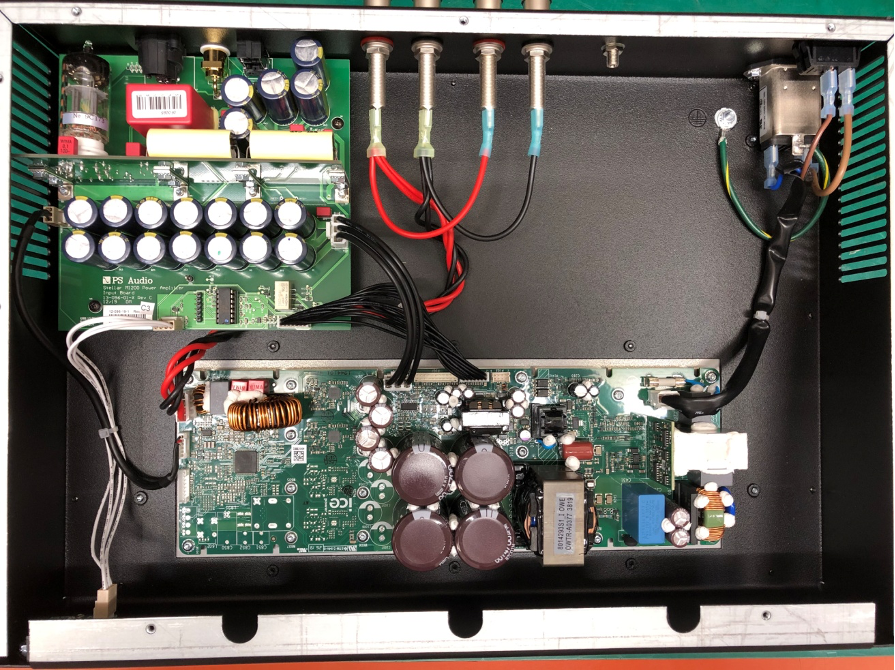
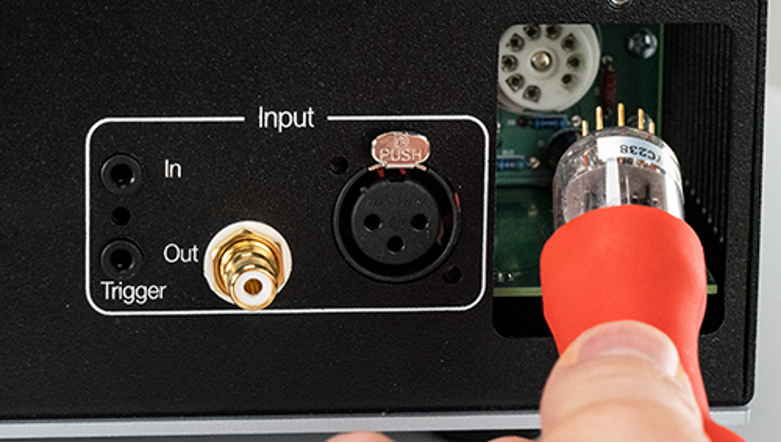

Hi Ken
In your excellent review of the Kinki P7 preamplifier I noticed you paired this with the Kinki Studio EX M7 power amp. I would be very keen to hear your thoughts comparing these two power amps. M1200 vs. Kinki EX M7 or the B7 if you have heard them. The Kinki power amps. are known to lean towards a more analytical sound with good dynamics and punch, much like your review of the M1200. Could you please elaborate the differences, who offers more punch/dynamics and which one is more analytical sounding?
Hi Adrian,
Those amplifiers are two very different animals but I will try to answer your question.
I’ll start with the easier of the two questions.
Punch/Dynamics.. The M1200’s win hands down in this comparison with some of the best bass control and micro and macro dynamics I have had delivered on my system(s). But then again it is multiple times more powerful and costly than the M7.
Most analytical sounding? This is a lot harder to answer as the word “analytical” means different things to different listeners.
I will say that while the EX-M7 is a bit drier overall, it is exceptionally sweet sounding, grain free and quite linear sounding with little editorializing. So in that sense it may be the more “analytical” ( not in a bad sense) The M1200’s have a denser midrange but still have just the smallest hint of upper midrange “push” that occasionally rears its head depending on the ancillary components and the complexity of the music.
I will offer a more complete assessment of the EX-M7 in an upcoming review of it this year …so stay tuned !!
Thanks for reading The Audio Beatnik and remember to enjoy your music!
Great review thanks for writing this up, I’ve been looking at the PS Audio M1200 for quite some time and pairing them with a Lyngdorf TDAI 3400 or using the Lyngdorf SDA 2400 Poweramp… Which would sound better?
I kind of wonder why one might go for so much power in a poweramp, i.e. the Lyngdorf SDA-2400 stating 200w at 8ohm and the M1200 stating a massive 600w at 8ohm which amazing.
What would all those extra 400w give you that the first 200w wouldn’t?
I do love the idea of multiple stages in the M1200, but just wonder if it’s worth twice the $$$s as the Lyngdorf?